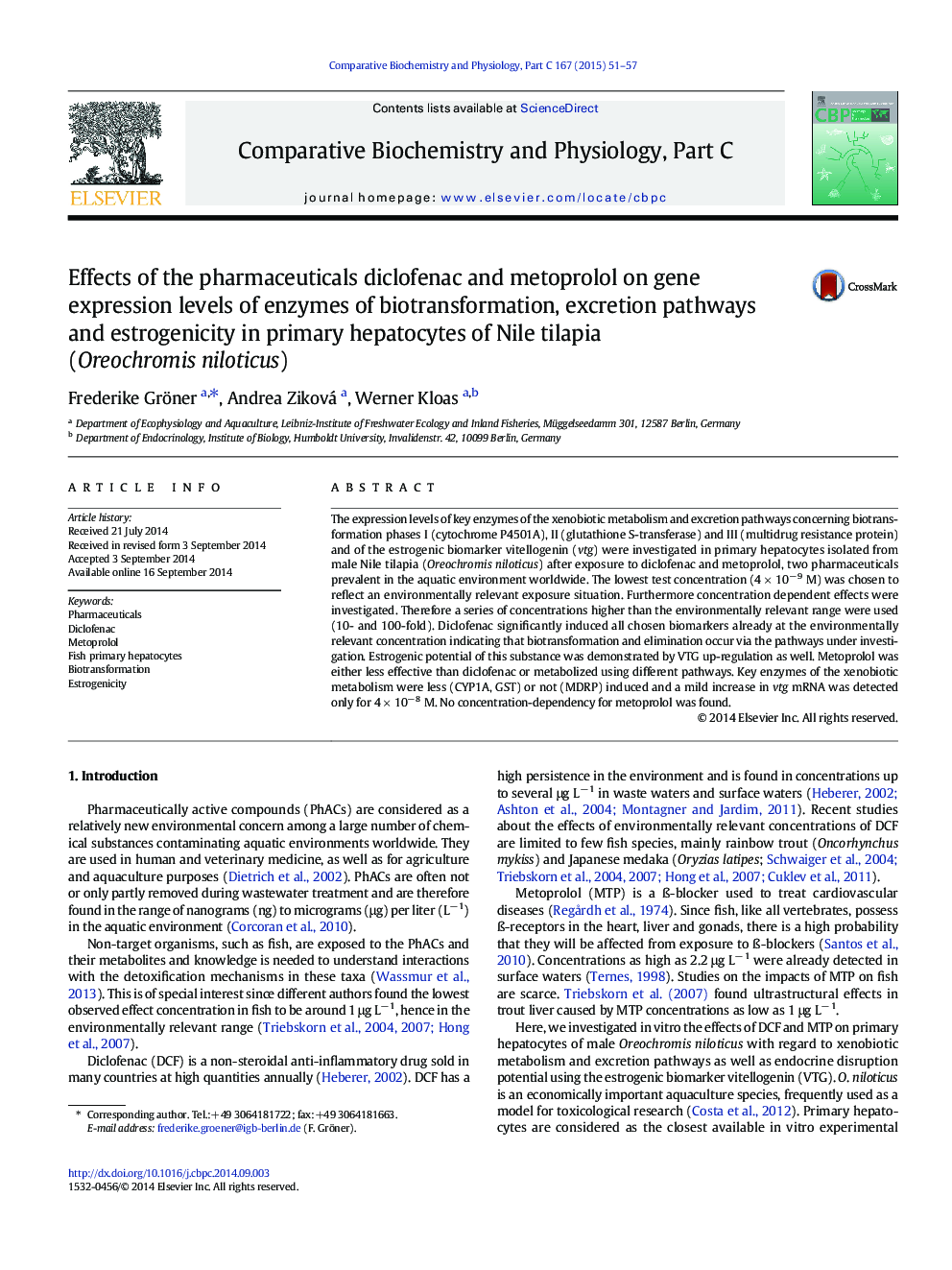| Article ID | Journal | Published Year | Pages | File Type |
|---|---|---|---|---|
| 8319118 | Comparative Biochemistry and Physiology Part C: Toxicology & Pharmacology | 2015 | 7 Pages |
Abstract
The expression levels of key enzymes of the xenobiotic metabolism and excretion pathways concerning biotransformation phases I (cytochrome P4501A), II (glutathione S-transferase) and III (multidrug resistance protein) and of the estrogenic biomarker vitellogenin (vtg) were investigated in primary hepatocytes isolated from male Nile tilapia (Oreochromis niloticus) after exposure to diclofenac and metoprolol, two pharmaceuticals prevalent in the aquatic environment worldwide. The lowest test concentration (4 Ã 10â 9 M) was chosen to reflect an environmentally relevant exposure situation. Furthermore concentration dependent effects were investigated. Therefore a series of concentrations higher than the environmentally relevant range were used (10- and 100-fold). Diclofenac significantly induced all chosen biomarkers already at the environmentally relevant concentration indicating that biotransformation and elimination occur via the pathways under investigation. Estrogenic potential of this substance was demonstrated by VTG up-regulation as well. Metoprolol was either less effective than diclofenac or metabolized using different pathways. Key enzymes of the xenobiotic metabolism were less (CYP1A, GST) or not (MDRP) induced and a mild increase in vtg mRNA was detected only for 4 Ã 10â 8 M. No concentration-dependency for metoprolol was found.
Related Topics
Life Sciences
Biochemistry, Genetics and Molecular Biology
Biochemistry
Authors
Frederike Gröner, Andrea Ziková, Werner Kloas,
